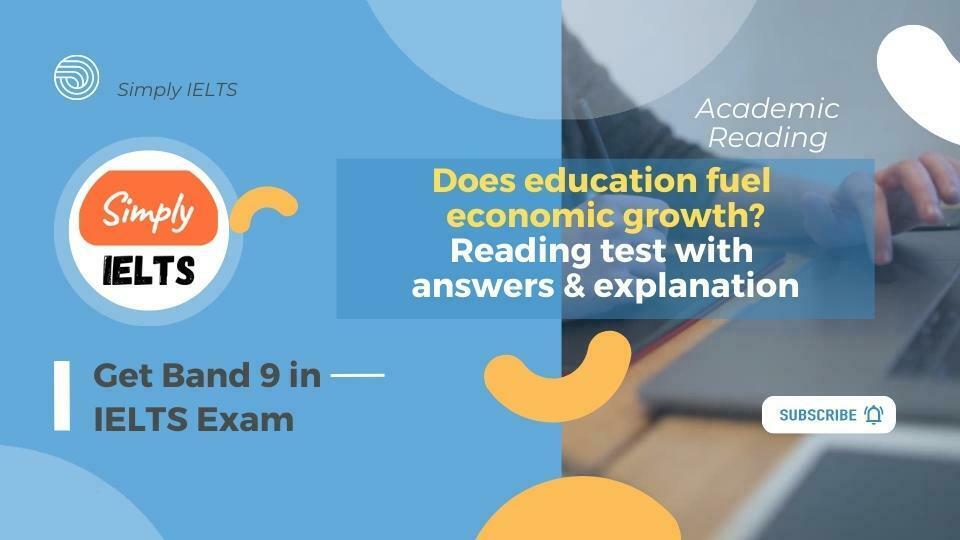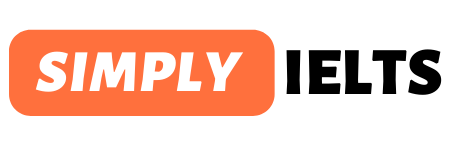Does education fuel economic growth? IELTS reading test with answers and explanation
A new IELTS Reading Academic test passage 2 from Cambridge IELTS 17 Reading test 4 Does education fuel economic growth? reading test with answers and location
In this IELTS Reading exam, you will find Does education fuel economic growth? IELTS reading test answers with location and explanation

In the answers tab, you can find Does education fuel economic growth? IELTS reading answers with location
Does education fuel economic growth? IELTS reading test answers and explanation
READING PASSAGE 2
You should spend about 20 minutes on Questions 14-26 which are based on Reading Passage 2 below.
Does education fuel economic growth?
A) Over the last decade, a huge database about the lives of southwest German villagers between 1600 and 1900 has been compiled by a team led by Professor Sheilagh Ogilvie at Cambridge University’s Faculty of Economics. It includes court records, guild ledgers, parish registers, village censuses, tax lists and – the most recent addition – 9,000 handwritten inventories listing over a million personal possessions belonging to ordinary women and men across three centuries. Ogilvie, who discovered the inventories in the archives of two German communities 30 years ago, believes they may hold the answer to a conundrum that has long puzzled economists: the lack of evidence for a causal link between education and a country’s economic growth.
B) As Ogilvie explains, ‘Education helps us to work more productively, invent better technology, and earn more … surely it must be critical for economic growth? But, if you look back through history, there’s no evidence that having a high literacy rate made a country industrialise earlier.’ Between 1600 and 1900, England had only mediocre literacy rates by European standards, yet its economy grew fast and it was the first country to industrialise. During this period, Germany and Scandinavia had excellent literacy rates, but their economies grew slowly and they industrialised late. ‘Modern cross-country analyses have also struggled to find evidence that education causes economic growth, even though there is plenty of evidence that growth increases education,’ she adds.
C) In the handwritten inventories that Ogilvie is analysing are the belongings of women and men at marriage, remarriage and death. From badger skins to Bibles, sewing machines to scarlet bodices – the villagers’ entire worldly goods are included. Inventories of agricultural equipment and craft tools reveal economic activities; ownership of books and education related objects like pens and slates suggests how people learned. In addition, the tax lists included in the database record the value of farms, workshops, assets and debts; signatures and people’s estimates of their age indicate literacy and numeracy levels; and court records reveal obstacles (such as the activities of the guilds*) that stifled industry.
Previous studies usually had just one way of linking education with economic growth – the presence of schools and printing presses, perhaps, or school enrolment, or the ability to sign names. According to Ogilvie, the database provides multiple indicators for the same individuals, making it possible to analyse links between literacy, numeracy, wealth, and industriousness, for individual women and men over the long term.
D) Ogilvie and her team have been building the vast database of material possessions on top of their full demographic reconstruction of the people who lived in these two German communities. ‘We can follow the same people – and their descendants – across 300 years of educational and economic change,’ she says. Individual lives have unfolded before their eyes. Stories like that of the 24-year-olds Ana Regina and Magdalena Riethmiillerin, who were chastised in 1707 for reading books in church instead of listening to the sermon. ‘This tells us they were continuing to develop their reading skills at least a decade after leaving school,’ explains Ogilvie. The database also reveals the case of Juliana Schweickherdt, a SO-year-old spinster living in the small Black Forest community of Wildberg, who was reprimanded in 1752 by the local weavers’ guild for ‘weaving cloth and combing wool, counter to the guild ordinance’. When Juliana continued taking jobs reserved for male guild members, she was summoned before the guild court and told to pay a fine equivalent to one third of a servant’s annual wage. It was a small act of defiance by today’s standards, but it reflects a time when laws in Germany and elsewhere regulated people’s access to labour markets. The dominance of guilds not only prevented people from using their skills, but also held back even the simplest industrial innovation.
E) The data-gathering phase of the project has been completed and now, according to Ogilvie, it is time ‘to ask the big questions’. One way to look at whether education causes economic growth is to ‘hold wealth constant’. This involves following the lives of different people with the same level of wealth over a period of time. If wealth is constant, it is possible to discover whether education was, for example, linked to the cultivation of new crops, or to the adoption of industrial innovations like sewing machines. The team will also ask what aspect of education helped people engage more with productive and innovative activities. Was it, for instance, literacy, numeracy, book ownership, years of schooling? Was there a threshold level – a tipping point – that needed to be reached to affect economic performance?
F) Ogilvie hopes to start finding answers to these questions over the next few years. One thing is already clear, she says: the relationship between education and economic growth is far from straightforward. ‘German-speaking central Europe is an excellent laboratory for testing theories of economic growth,’ she explains. Between 1600 and 1900, literacy rates and book ownership were high and yet the region remained poor. It was also the case that local guilds and merchant associations were extremely powerful and legislated against anything that undermined their monopolies. In villages throughout the region, guilds blocked labour migration and resisted changes that might reduce their influence.
‘Early findings suggest that the potential benefits of education for the economy can be held back by other barriers, and this has implications for today,’ says Ogilvie. ‘Huge amounts are spent improving education in developing countries, but this spending can fail to deliver economic growth if restrictions block people – especially women and the poor – from using their education in economically productive ways. If economic institutions are poorly set up, for instance, education can’t lead to growth.’
Now start to answer “Does education fuel economic growth IELTS reading test” questions. You will have 20 minutes to answer questions 14 to 26.
.You can download answers as a pdf file from here:
Does education fuel economic growth IELTS reading test Questions
click Finish exam to check the correct answers
Does education fuel economic growth? IELTS Reading Answers
| Questions | Answers |
|---|---|
| 14 | E |
| 15 | A |
| 16 | D |
| 17 | F |
| 18 | C |
| 19 | descendents |
| 20 | sermon |
| 21 | fine |
| 22 | innovation |
| 23 | B/E |
| 24 | B/E |
| 25 | B/D |
| 26 | B/D |



Responses